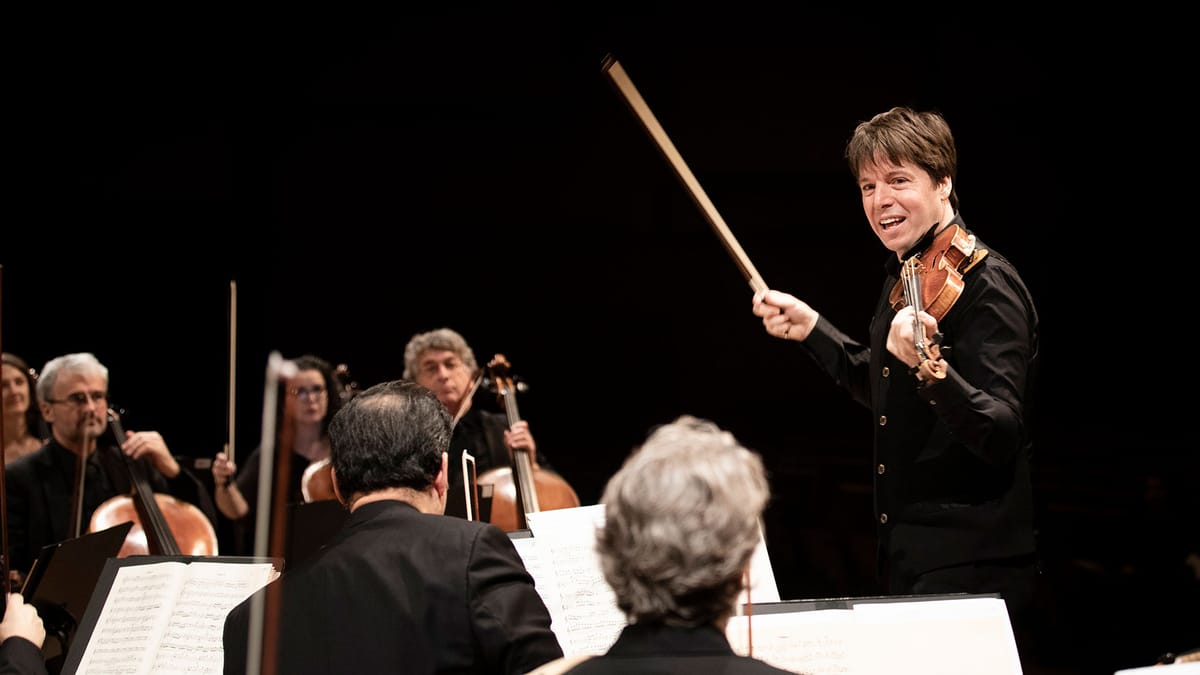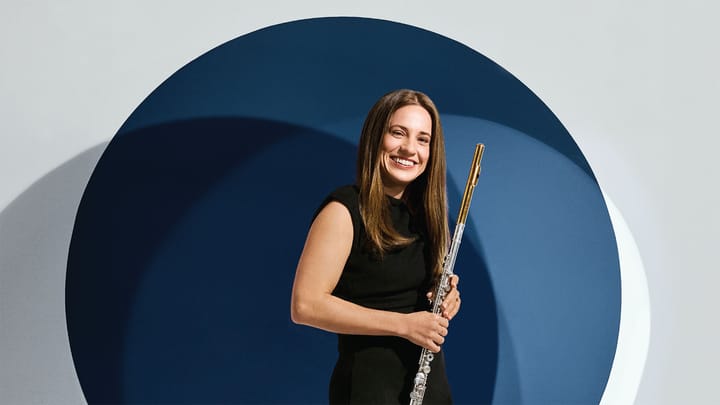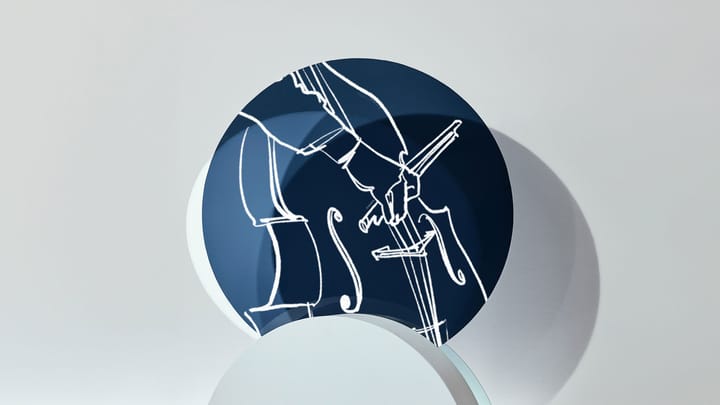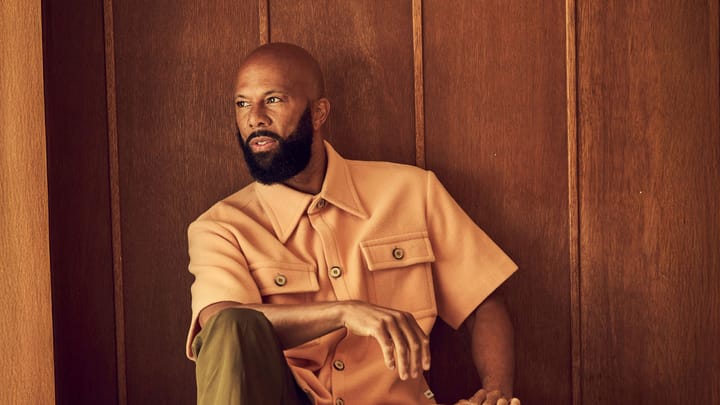In This Program
The Concert
Wednesday, February 26, 2025, at 7:30pm
Academy of St Martin in the Fields
Joshua Bell music director and violin
Stephanie Gonley director
Johann Sebastian Bach
Concerto for Two Violins in D minor, BWV 1043 (ca. 1720)
Vivace
Largo ma non tanto
Allegro
Joshua Bell violin
Fiona Cunninghame-Murray violin
Joseph Haydn
Symphony No. 29 in E major (1765)
Allegro di molto
Andante
Menuet: Allegro
Presto
Stephanie Gonley director
Intermission
Nicolai Rimsky-Korsakov
Scheherazade, Opus 35 (1888)
The Sea and Sinbad’s Ship
The Tale of the Kalendar Prince
The Young Prince and the Young Princess
The Festival at Baghdad–The Sea–The Ship Goes to Pieces on a Rock Surmounted by a Bronze Warrior
With Musicians from the San Francisco Conservatory of Music
Presenting Sponsor of the Great Performers Series

Program Notes
Concerto for Two Violins
in D minor, BWV 1043
Johann Sebastian Bach
Born: March 21, 1685, in Eisenach, Germany
Died: July 28, 1750, in Leipzig
Work Composed: ca. 1720
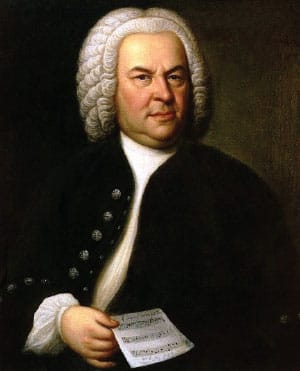
Most musicologists share the opinion that Johann Sebastian Bach’s D-minor Concerto for Two Violins dates from his time in Cöthen, where he was employed from 1717–23, although one of today’s leading Bach scholars, Christoph Wolff, believes that it followed after he moved to Leipzig in 1723. There is not much of an archival record to clarify the matter. The work comes down to us not in full score but rather in manuscript parts written out jointly by Bach, his son Carl Philipp Emanuel, his son-in-law Johann Christoph Altnikol, and his student Johann Ludwig Krebs.
Orchestral music was rarely a focus of Bach’s work. He was in charge of secular music for the Cöthen Court, but its highly accomplished 13-member instrumental ensemble fell short of what we would consider a modern orchestra. That’s why his ostensibly orchestral pieces of that period still stand with one foot planted in the realm of chamber music. The orchestra here consists only of strings, with some reinforcement for the continuo part.
The two violinists are equal soloists in this work, often sharing their musical material in close alternation. The opening movement begins with a fugal exposition in the orchestra, to which the solo violins respond with a passage in which fluid melodic runs are given a memorable contour through angular leaps of a 10th. The slow movement provides a particularly fine example of Bach’s ability to make time seem to stop while the players weave a magical tapestry from threads of poignancy, resignation, and tenderness. Anything would seem an intrusion after such a movement, but Bach offers an unusually blustery, even angry, finale.
Symphony No. 29 in E major
Joseph Haydn
Born: March 31, 1732, in Rohrau, Austria
Died: May 31, 1809, in Vienna
Work Composed: 1765
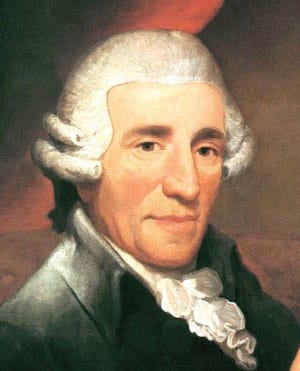
Joseph Haydn’s appointment in 1761 as Vice-Kapellmeister of the powerful Esterházy Court marked a watershed moment in his career. The players he directed traveled with Prince Paul Anton and then Prince Nikolaus (who acceded upon Paul Anton’s death, in 1762), circulating among the court’s palace in Vienna and its summer residences in Eisenstadt (some 30 miles to the southeast) and at the castle of Kitsee (overlooking the Danube). He composed all of his early- and middle-period symphonic works for these musicians. Since the aged Kapellmeister Gregor Joseph Werner remained in charge of vocal music, Haydn focused entirely on symphonic and chamber pieces for the first few years. When Werner died, in 1766 (a year after Symphony No. 29 was written), Haydn was promoted to Kapellmeister, a position he held until 1790. He was perpetually occupied composing new works for his musicians’ use and his prince’s delectation, upholding an astonishingly high standard of composition in the midst of almost unimaginable productivity. As Haydn recalled of these years, in an interview with his biographer Georg August Griesinger: “My sovereign was satisfied with all my endeavors. I was assured of applause and, as head of an orchestra, was able to experiment, to find out what enhances and detracts from effect, in other words, to improve, add, delete, and try out. As I was shut off from the world, no one in my surroundings would vex and confuse me, and so I was destined for originality.”
Prince Nikolaus prized Haydn’s musical unpredictability, and he was served plenty of it in the Symphony No. 29. If there is such a thing as a typical Haydn symphony, this is not it. Its first movement is unusual in being cast in 3/4 time (Haydn’s first movements are nearly always in duple meter); here, it sounds almost like a minuet on steroids. Off-beat displacements add quiet drama to the Andante, and the finale bustles with exceptional vigor. But it is the third movement, the actual Minuet and Trio, that is the most extraordinary—and specifically the dark-hued trio section, which lacks a melody. Instead, Haydn writes only an accompaniment, in unprepossessing oom-pah-pah style. Some interpreters feel that one of the musicians would have improvised the missing melody, but others accept the piece as it stands and allow it to charm through its weirdness.
Scheherazade, Opus 35
Nicolai Rimsky-Korsakov
Born: March 18, 1844, in Tikhvin, Russia
Died: June 21, 1908, in Liubensk, Russia
Work Composed: 1888
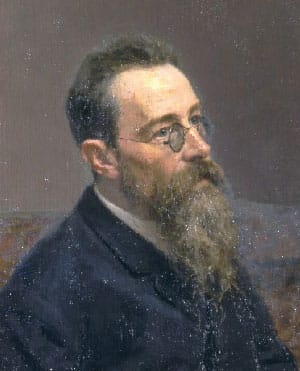
Nicolai Rimsky-Korsakov fixed on writing Scheherazade in the winter of 1887–88, but composition waited until his summer vacation a few months later. Once he decided to base his piece on the Arabian Nights tale of Scheherazade, he pondered how much plot to inject into it. The prose introduction he attached to his score clarifies that the suite had clear literary implications:
The Sultan Shahriar, convinced of the duplicity and infidelity of all women, vowed to slay each of his wives after the first night. The Sultana Scheherazade, however, saved her life by the expedient of recounting to the Sultan a succession of tales over a period of one thousand and one nights. Overcome by curiosity, the monarch postponed the execution of his wife from day to day, and ended by renouncing his sanguinary resolution altogether.
In the original edition, the four movements were headed “The Sea and Sinbad’s Ship,” “The Story of the Kalendar Prince,” “The Young Prince and the Young Princess,” and “Festival at Bagdad—The Sea—The Ship Goes to Pieces on a Rock Surmounted by a Bronze Warrior.” In his memoirs, Rimsky-Korsakov stated, “My aversion for seeking too definite a program in my composition led me subsequently (in the new edition) to do away with even those hints of it which had lain in the headings of each movement,” though often the piece is still purveyed with those subtitles. He continued: “In composing Scheherazade, I meant these hints to direct but slightly the hearer’s fancy on the path which my own fancy had traveled, and to leave more minute and particular conceptions to the will and mood of each.”
—James M. Keller
About the Artists
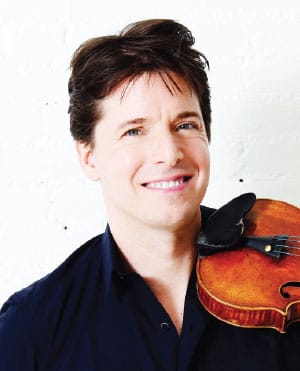
Joshua Bell
With a career spanning almost four decades, Grammy Award-winning violinist Joshua Bell has performed with virtually every major orchestra in the world, and continues to maintain engagements as a soloist, recitalist, chamber musician, conductor, and as the music director of the Academy of St Martin in the Fields.
Bell’s highlights this season include the August release of two new albums: Thomas de Hartmann Rediscovered, released on Pentatone, and an album of Mendelssohn piano trios with Jeremy Denk and Steven Isserlis, released on Sony Masterworks. He appears as guest soloist with the New York Philharmonic, conducts and plays with Deutsches Symphonie-Orchester Berlin, and tours in recital throughout North America, South America, Australia, and mainland China. He made his San Francisco Symphony debut in 1991 as a Shenson Young Artist.
Bell has been nominated for six Grammy Awards, was named “Instrumentalist of the Year” by Musical America, deemed a “Young Global Leader” by the World Economic Forum, and received the Avery Fisher Prize. He has performed for three American presidents and the justices of the Supreme Court of the United States. Bell participated in President Barack Obama’s Committee on the Arts and Humanities’ mission to Cuba, resulting in an Emmy-nominated PBS Live from Lincoln Center special. Bell performs on the 1713 “Huberman” Stradivarius violin.
Joshua Bell appears by arrangement with Park Avenue Artists and the Academy of St Martin in the Fields. He records exclusively for Sony Classical—a Masterworks label. The position of the music director of the Academy of St Martin in the Fields is generously supported by the Berry Charitable Foundation.
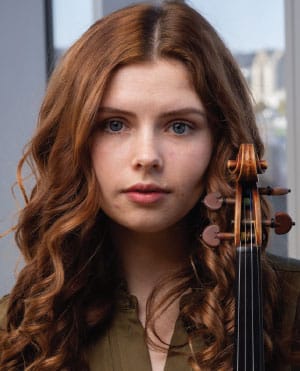
Fiona Cunninghame-Murray
Fiona Cunninghame-Murray was born in Marin County and raised in Baltimore. She studied at the Peabody Pre-Conservatory with Lenelle Morse and earned her bachelor’s degree at the University of Michigan, where she studied with David Halen, concertmaster of the St. Louis Symphony. She is currently pursuing her master’s degree at the San Francisco Conservatory of Music, studying with San Francisco Symphony violinist Chen Zhao.
Cunninghame-Murray has participated in summer programs including the Meadowmount Festival and Aspen Music Festival. She has shared the stage with Gil Shaham and the Aspen Festival Orchestra and collaborated with Wynton Marsalis and the Jazz at Lincoln Center Orchestra. She makes her debut at the San Francisco Symphony with this performance.
The Academy of St Martin in the Fields
Founded in 1958 by Sir Neville Marriner, the Academy of St Martin in the Fields has evolved into a musical powerhouse, an orchestra renowned across the world for commitment to the musical freedom of its players and the sharing of joyful, inspiring performances. Today, with music director Joshua Bell, ASMF’s player-led approach empowers every member of the orchestra, creating a direct line and electrifying connection between the orchestra and its audiences, resulting in collaborative performances that transcend the traditional conductor-led model.
ASMF presents more than 100 concerts in the 2024–25 season. International highlights include a 19-date European tour featuring cycles of Beethoven’s Piano Concertos with Jan Lisiecki alongside works by Errollyn Wallen, Ruth Gipps, and Anna Clyne, followed by a visit to the United States in February and March.
ASMF’s commitment to a social purpose manifests in impactful projects harnessing the power of music to empower. The Academy has a longstanding history of work connecting with people experiencing homelessness, and education projects that develop autonomy and creativity among emerging musicians worldwide.
ASMF’s work in the United States and the residency at the San Francisco Conservatory of Music is kindly supported by Maria Cardamone and Paul Matthews.
The work of the Academy of St Martin in the Fields in the United States is generously supported by the American Friends of the Academy of St Martin in the Fields (Maria Cardamone, President).
Exclusive Management for the Academy of St Martin in the Fields: Opus 3 Artists.
The Academy of St Martin in the Fields
Annie Lydford, Chief Executive
Tim Davy, Executive Director, Performance & Planning
Hannah Bache, Head of Concerts & Tours
Aimee Walton, Concerts & Tours Manager
Charlotte Templeman, Orchestra Personnel Manager
Anna Galloway, Performance & Projects Coordinator
Alex Tighe, Project Manager
Michael Pattison, Stage Manager
Helen Harris, Librarian
Chris Martin, Director of Development & External Affairs
Amy Scott, Head of UK Development
Georgina Hamilton, Development Manager (American Friends)
Rose Hall, Marketing & Communications Manager
William Lloyd, Development & Marketing Coordinator
Callum Given, Head of Social Purpose
Rebecca Driver Media Relations, PR Consultant
Philip Knight, Finance Manager
For Opus 3 Artists
Robert Berretta, Managing Director
Benjamin Maimin, Chief Operating Officer
Jemma Lehner, Associate Manager
Miles Bentley, Administrative Assistant
For the Academy of St Martin in the Fields Tour
Leonard Stein, Consulting Producer
Peter Katz, Touring Coordinator
Sarah Vardigans, Company Manager
FIRST VIOLINS
Joshua Bell, Music Director
Stephanie Gonley, Director
Mathea Goh^
Miranda Playfair
Aleksi Zaretsky^
Amanda Smith
Jeeihn Kim^
Fiona Brett
Haeun Nam^
Sijie Chen
Zeke Sokoloff^
Richard Milone
Sofia Malvinni^
SECOND VIOLINS
Matthew Ward
Natalie Boberg^
Rebecca Scott
Jaimie Yoon^
Antonia Kesel
Mateo Garza^
Kathy Shave
Diego de la Cruz^
Cecily Ward
Poyu Lee^
VIOLAS
Fiona Bonds
Zoe Yost^
Alexandros Koustas
Yun Liu^
Matthew Maguire
Seyoun Park^
Rachel Robson
Lily Wang^
CELLOS
Richard Harwood
Ayoun Alexandra Kim^
Will Schofield
Calvin Kung^
Judith Herbert
Alex Liu^
Sarah Suckling
BASSES
Lynda Houghton
Alexandria Kelley^
David Stark
Carlos Valdez^
HARPSICHORD
Corey Jamason*
FLUTES
Sarah Newbold
Lyric Rivera^
Beneditto Caroccio^, Piccolo
OBOES
James Hulme
Haley Hoffman^
Rachel Ingleton
CLARINETS
James Burke
Jason Wilcox^
BASSOONS
Julie Price
Fabio Valery Villanova^
HORNS
Stephen Stirling
Joanna Hensel
Drew Patterson^
Yolanda Zheng^
Seth Shumate^
TRUMPETS
Mark David
Caleb Brosnac^
TROMBONES
Rebecca Smith
Austin Talbot^
Gary Jones^, Bass Trombone
TUBA
Patrick Zhang^
HARP
Chloe Tula
Julia Gruenbaum^
TIMPANI
Louise Goodwin
PERCUSSION
Toby Kearney
Brandon Topolski^
Will Harris^
Will Howald^
Carlos Alvarez^
*SFCM Faculty Member (Concerto for Two Violins)
^SFCM Students (Scheherazade)

